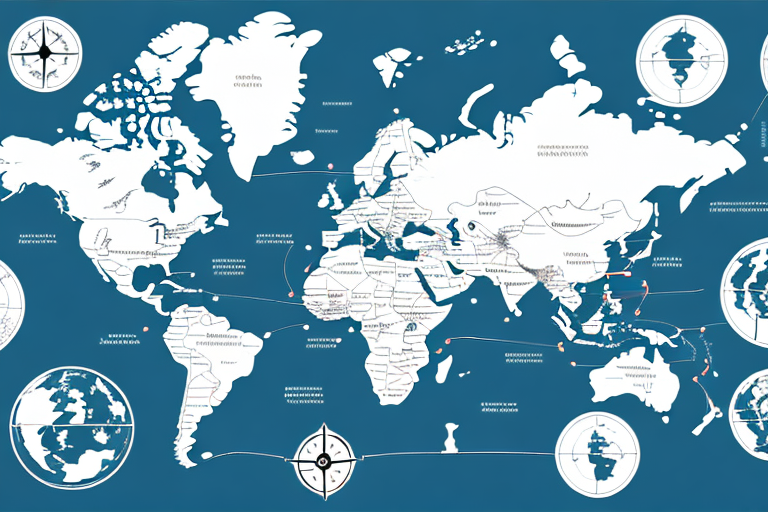Understanding the UPS Zone Map
The UPS Zone Map is a crucial tool for businesses involved in shipping goods to customers across the United States. It categorizes the country into various zones, each influencing the cost and efficiency of shipping. Understanding these zones allows businesses to optimize their shipping strategies, reduce costs, and enhance customer satisfaction.
Purpose of the UPS Zone Map
The primary purpose of the UPS Zone Map is to determine shipping costs based on the distance between the origin and destination. The United States is divided into zones ranging from 2 to 8, with Zone 2 being the closest to the UPS origin point and Zone 8 the farthest. This zonal system helps businesses accurately calculate shipping expenses, ensuring they can price their products competitively while maintaining profit margins.
Factors Influencing Zone Classification
While distance is a significant factor in zone classification, other elements such as transportation infrastructure, population density, and shipment volume also play a role. For instance, two locations equidistant from the origin might fall into different zones due to variations in infrastructure or shipping volume, affecting the overall shipping cost.
Updates to the UPS Zone Map for 2023
Each year, UPS reviews and updates its Zone Map to reflect changes in infrastructure, population shifts, and shipping patterns. The 2023 UPS Zone Map includes several noteworthy updates:
- Boundary Adjustments: Some zone boundaries have been realigned to account for new UPS facilities and evolving transportation routes.
- Introduction of New Zones: To better serve growing markets, additional zones have been incorporated in high-demand areas.
- Consolidation of Existing Zones: Certain zones have been merged to streamline shipping processes and reduce costs.
Staying informed about these changes is essential for businesses to maintain accurate shipping cost calculations and optimize their logistics operations.
Impact of the UPS Zone Map on Shipping Costs
The Zone Map directly affects shipping costs by determining the base rate for package delivery. Generally, the further a package travels, the higher the shipping cost. However, the zone system also considers the efficiency of shipping routes and infrastructure, which can influence pricing beyond mere distance.
Calculating Shipping Costs
To accurately calculate shipping costs using the UPS Zone Map:
- Identify the origin and destination zones.
- Refer to the UPS pricing guide specific to those zones.
- Consider additional factors such as package weight, dimensions, and chosen shipping method.
Utilizing UPS's online tools can simplify this process, providing instant quotes based on the latest Zone Map data.
Benefits of Using the UPS Zone Map for Businesses
Integrating the UPS Zone Map into business operations offers multiple advantages:
- Cost Efficiency: Accurate shipping cost calculations help businesses avoid overcharging or undercharging customers.
- Strategic Planning: Understanding zone distributions can inform decisions about warehouse locations and inventory management.
- Enhanced Customer Satisfaction: Reliable shipping costs and delivery estimates improve transparency and trust with customers.
Optimizing Shipping Strategies
Businesses can leverage the UPS Zone Map to refine their shipping strategies by:
- Identifying high-density customer zones to establish regional distribution centers.
- Negotiating better shipping rates based on volume and zone-specific data.
- Implementing tiered shipping options tailored to different zones, offering both economy and expedited services.
Technological Advancements in UPS Zone Mapping
Advancements in technology have significantly enhanced the accuracy and utility of the UPS Zone Map. Innovations in mapping technology and data analytics enable UPS to:
- Continuously update and refine zone boundaries in real-time.
- Analyze shipping patterns to predict and accommodate future changes in demand.
- Integrate with businesses' logistics software for seamless shipping management.
Additionally, UPS's investment in automated sorting facilities and AI-driven route optimization further improves the efficiency of their shipping network.
Common Misconceptions About the UPS Zone Map
Several misunderstandings can lead to inaccurate use of the UPS Zone Map:
- All Zones Have Uniform Rates: Shipping rates can vary within the same zone based on package size, weight, and shipping speed.
- Zone Determination Is Solely Based on Distance: Other factors like infrastructure and shipment volume also influence zone classification.
- Zone Maps Remain Static: UPS regularly updates Zone Maps to reflect changes in the shipping network and infrastructure.
Understanding these nuances ensures businesses utilize the UPS Zone Map effectively, avoiding potential shipping cost miscalculations.
Conclusion: Leveraging the UPS Zone Map for Strategic Shipping
The UPS Zone Map is an indispensable tool for businesses aiming to optimize their shipping operations. By comprehending its structure, staying updated with annual changes, and integrating it into strategic planning, businesses can achieve significant cost savings, enhance operational efficiency, and improve customer satisfaction. Embracing the insights provided by the UPS Zone Map empowers businesses to make informed shipping decisions, fostering growth and competitiveness in the dynamic marketplace.






















